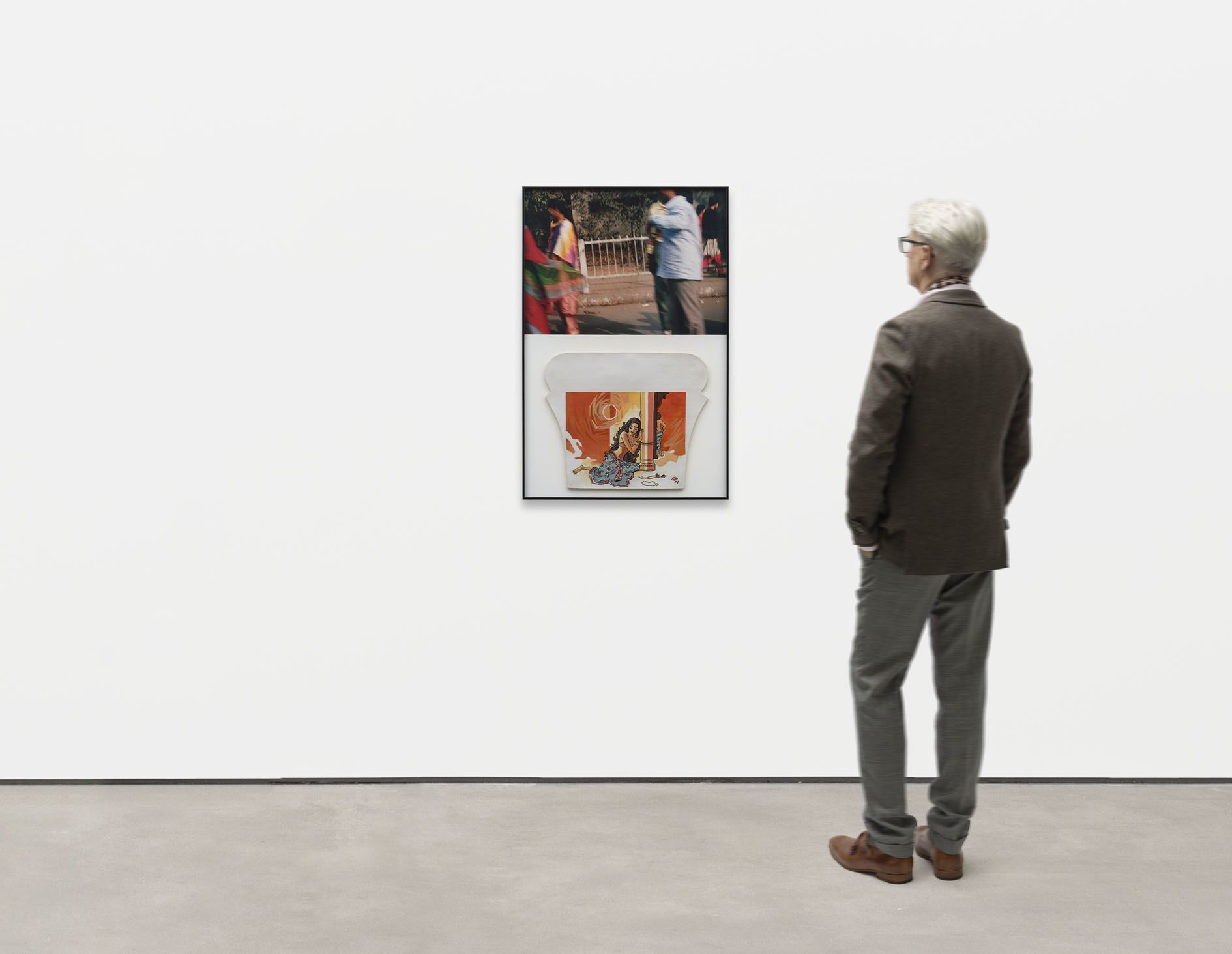The cleverly devised arrangements of Ahmedabad 1992 document this shift. Here, floating electronics in a futuristic cyberspace point towards the burgeoning technological revolution of the ’90s. There, a sense of motion and transition is reflected in the dominant motifs, including modes of transportation (motorbikes, bicycles, trucks), animals in movement (a cow trotting along the roadside or a bird in flight), and cricket being played or kites being flown. Also at constant play in the series is the alternating and interlacing of looking and being looked at, with several images either observing the action of street scenes or featuring a subject’s direct gaze, and sometimes both.




































































































































